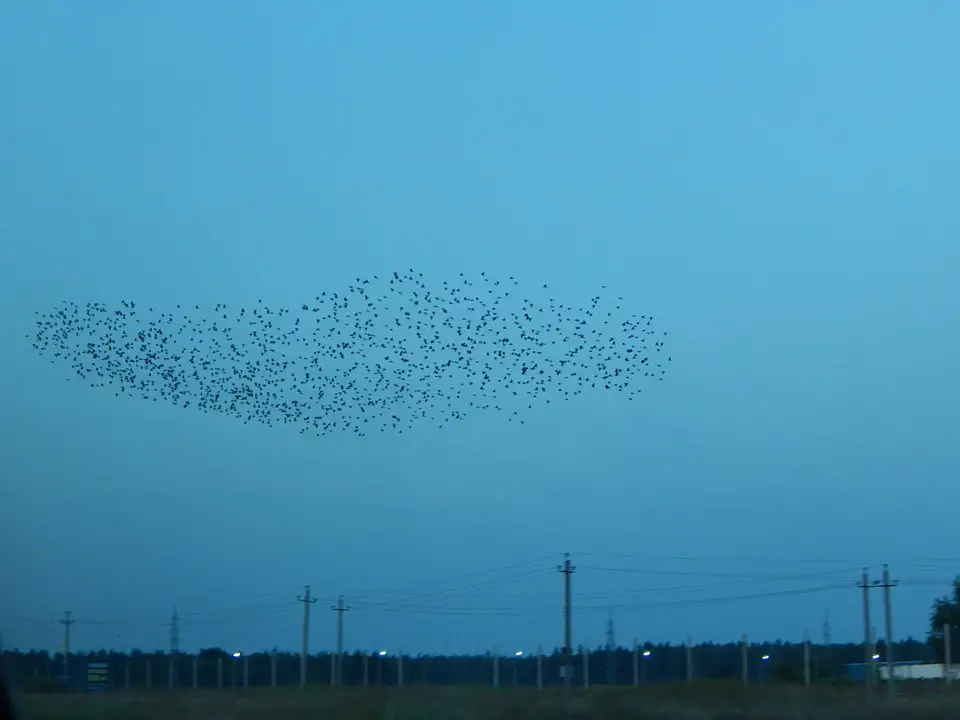A collection of birds that gathers together to perform a synchronised aerial display is known as a murmuration.
The most common birds to behave this way are starlings. The phenomenon occurs between October and March all over the UK.
There are many theories as to why birds murmurate. Researchers collate sightings of murmurations to give them greater insight.
Starlings are canny creatures and know that there is both safety and warmth in numbers.
They murmurate for protection and shared body heat. Another reason to gather in large numbers is to share information and alert other birds to their roosting site.
Table of Contents
Signposting a roosting spot
Starlings murmurate above their chosen roosting spot. It is often on agricultural or wetlands, but they are also keen on seaside piers; anywhere that there is a large, sheltered roosting site attracts their attention.
The displays happen at dusk. Such a large number of birds is easy to see from a great distance; therefore, attracting more birds to their whereabouts.
Other small flocks join the aerial dance from all directions, and return to the roost en masse when it is over. This usually takes around 30-minutes. The more birds that congregate, the better the survival chances of each bird.
Many UK starlings are migrants birds from colder parts of northern Europe. They are on the lookout for a secure roosting spot as soon as they arrive. A skyward murmuration is as good as a big flashing neon sign to a hungry and tired bird.

Safe from predators
Sparrowhawks and peregrine falcons are birds of prey that happily feast on starlings.
Flying in an ever-changing formation makes it very difficult for the predator to target an individual bird. Their hypnotising flying in sequence confuses the predator, who will look elsewhere for their prey.
With so many pairs of eyes on the lookout, the message of imminent danger passes quickly through the flock.
Increased body heat
Even the smallest starling murmurations contain upwards of 10,000 birds. Winter nights are cold and threatening for such tiny creatures; huddling together increases their chances of surviving the overnight low temperatures.
Spread the word
It is believed that starlings pass useful information around as they fly and roost together. They discuss places where food is plentiful and safe places to rest.
They are masters of mimicry and possess at least 10-different calls, each of which fellow starlings understand.
They chatter purr, rattle, warble, whistle. The starling has a special warning sound to alert others when predators approach. It sounds like “chackerchackerchacker”, it’s usually accompanied by flurried wing-flapping.
The more gentle “chip-chip” sounds between the birds are thought to be more ‘conversational’ tones.
Final thoughts
Scientists aren’t precisely sure as to why birds murmurate but have many theories.
The founders of StarlingsUK website ask us to pop online and let them know the location of any murmuration sightings.
That way, work can continue to better understand why starlings fly in such well-choreographed aerial displays.
